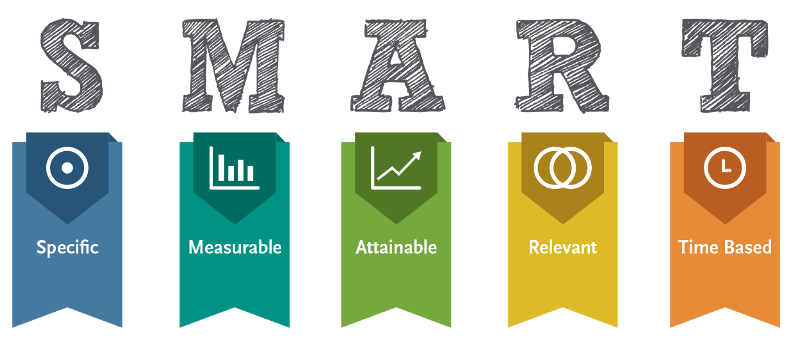Getting Serious with Small Business
At one point or another, every business owner decides that it’s time to start getting serious and set their business goals. If you’re already at that stage, good! You’re already halfway there.
Not having business goals is exhausting. It’s like travelling with no destination. Wait, that actually sounds pretty fun – bad example. It’s more like running a marathon with no end, because marathons are tiring and businesses usually are as well. They both give you a sense of accomplishment when you reach milestones, but without those landmarks to measure how well you’re doing, burnout is the only thing you reach. If you’re ready to start getting serious about your small business, read on…
1. Be SMART
This isn’t corporate fluff. It actually works.
When you set goals, you need to make them SMART or they’re not goals. They’re fluffy pieces of wishful thinking that have no substance to them. They’re something else that doesn’t have a cool acronym.

Here are two examples of SMART goals:
For the next 3 months, I will gain 1 new client each week for my hair salon by using Facebook and Google Adwords advertising.
I will create a referral programme for my beauty clinic to get customers to refer two people each by December 31st.
2. Say yes to brainstorming
You will always encounter obstacles. If business wasn’t hard it wouldn’t be rewarding! But if you can predict some of those obstacles, you can save yourself a lot of hard work and stress. Ain’t nobody got time for that.
For example, take this goal:
Create a referral programme for my beauty clinic to get customers to refer two people each by December 31st.
We’re going to need to educate the front of house person to sell the referral programme well to each customer. They’re going to need to make them WANT to refer.
Secondly, we’re going to need to find a way to keep a track of all the referrals so that they can be measured.
Those are just some of the things you’ll need to plan for. You can probably think of many more than I can!
3. Break it down
Good, you have long term goals. You wake up in the morning. You go to work. Goals mean nothing to you on a day to day basis. You need to break it down into bite-sized pieces.
Some people say that accomplishing just one thing every day helps them reach their goals. That’s 5 things in a day. That’s 20 things in a month. They break their big goals into monthly targets, then daily targets and it all adds up.
Other times, it can be helpful to set smaller deadlines – say weekly and monthly – and just work flexibly around what gets done when. You’re the boss. It’s your call!
4. Do it
No further comments.
5. Measure
If something’s not working, it’s not contributing to your goals and it needs to go. Move on to the next thing, or change what you’re doing. Otherwise you get overwhelmed with too much to do. Life’s too short for that kind of stress.
To know whether something is working as planned, you need to be able to track your progress. Use reporting features in your booking software to help you.
6. Work hard, change quickly
Always give something your best shot. If it doesn’t work, try another approach. Your journey to the top is not an easy one, and you can’t expect it to be. But if it seems that what you’re doing is not helping you get to where you are, don’t feel bad about changing your strategy. Like anything in life, goal setting is a learned skill. You couldn’t just turn up with no training and do your job. It’s the same thing with business – you need practice to excel.
What can sometimes be helpful is to tell someone, someone you work with or someone in your life, what you want to achieve. Then you have that accountability to make it happen, and when you don’t, they’ll point it out to you. They can help you find new solutions to your problems by offering a different point of view.
Other times, it’s as simple a reminding yourself when you get out of bed every morning that you’re the boss. You make things happen, and it’s your time to get out there and make your goals a reality.
Getting Serious Summary
Most goal-setting starts with a “session”. This is where you’ll brainstorm your ideas and put everything down somewhere so you can see it visually. Next, you’ll put numbers to your big pictures goal. Thirdly, you’ll apply those numbers to your everyday life. And fourthly, stick by them!
Good luck! (Not that you need it.)


